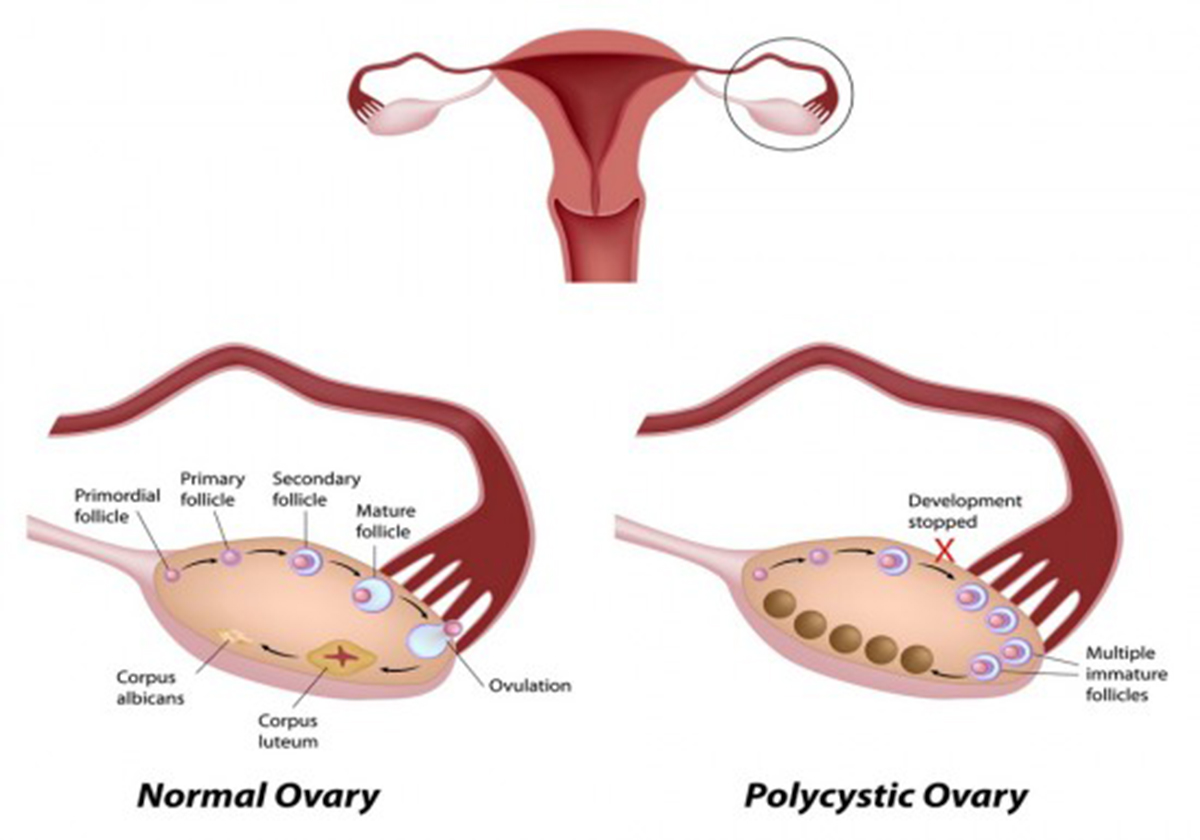Table of Contents
Woman’s reproductive cycles is a very complex process. The main parts of the woman's reproductive cycle process are regulated by fluctuating levels of hormones produced by the two organs:
- Pituitary gland in woman’s brain: luteinizing hormone (LH) and follicle-stimulating hormone (FSH), and
- Woman’s ovaries which secrete the female hormones estrogen and progesterone and also produce some androgens. Androgens include testosterone, androstenedione and dehydroepiandrosterone (DHEA).

What happens in PCOS?
In PCOS, some of the follicles remain immature, not reaching full development or ovulating to produce an egg capable of being fertilized. This means that the woman with this syndrome rarely ovulates and so is less fertile. She also does not have regular periods. Other features of the condition are excess weight and excess body hair. In polycystic ovary syndrome, female body produces an excess of androgens, and ratio of LH to FSH is often abnormally high.
Possible cause of PCOS
High insulin
The cause of polycystic ovary syndrome is not yet totally clear, but research suggests a link to excess insulin. Insulin is the hormone produced in the pancreas that allows cells to use sugars, body's primary energy supply. Excess insulin is thought to boost androgen production by ovaries.
Genetics
Studies also indicate that genetic factors may play a role in this syndrome. While it is not known if women are born with this condition, this syndrome seems to run in families. Interestingly, when PCOS is passed down the man's side of the family, the men are not infertile, but they do have a tendency to become bald early in life, before the age of 30.
Obesity
Women are also more at risk if they are overweight. Maintaining weight or body mass index below a critical point is probably very important in controling the symptoms and physical features of the condition.
Diagnosis of polycystic ovary syndrome
There are several diagnostic tools which are used to diagnose a PCOS. Doctors should evaluate patient for reproductive, hormonal and cardiovascular disorders.
Complete physical examination including detailed patients history could be the key of the good diagnosis
Other tests may include:
Blood tests
Patient’s blood may be drawn for laboratory tests to measure the levels of some hormones such as testosterone, DHEA and androstenedione, LH, FSH, progesterone, prolactin, and thyroid-stimulating hormone (TSH).
Ultrasound
Doctors usually request a pelvic ultrasound to check patient’s ovaries and the thickness of the lining of the uterus.
Differential diagnosis
Experts have found out that several other disorders can cause signs and symptoms similar to those of polycystic ovary syndrome:
Hypothyroidism
In this condition, a woman’s body produces too little thyroid hormone, which can lead to an absence of menstruation – a condition called amenorrhea.
Hyperprolactinemia
This condition causes a woman’s pituitary gland to produce too much prolactin, a hormone that stimulates the production of breast milk and suppresses ovulation.
Certain tumors
Tumors of the ovary or adrenal gland can be responsible for excess androgen levels.
- www.mayoclinic.com/health/polycystic-ovary-syndrome/DS00423
- www.womenshealth.gov/a-z-topics/polycystic-ovary-syndrome
- youngwomenshealth.org/2014/02/25/polycystic-ovary-syndrome/
- https://www.nhs.uk/conditions/polycystic-ovary-syndrome-pcos/ Photo by shutterstock.com

